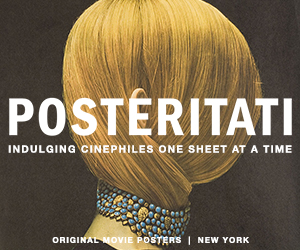In imagining the life of the medieval Russian painter Andrei Rublev, director Andrei Tarkovsky offers an epic consideration of what it means to make religious art. It almost feels as if Tarkovsky is setting the stage for the rest of his career with Andrei Rublev, identifying and declaring the terms by which he would go on to make deeply spiritual cinematic masterpieces such as Solaris, Stalker, Mirror, and Nostalghia.
After an extended and stunning prologue, in which a rudimentary balloonist (Nikolay Glazkov) briefly soars over a flooded landscape before crashing back to earth, we meet the melancholy, meditative Rublev (Anatoliy Solonitsyn) as a young artist. It is the summer of 1400 and he is traveling with fellow painters in search of work creating icons in churches and monasteries. Seeking shelter from the rain in a ramshackle tavern, they scoff at a performer (Rolan Bykov) who is entertaining villagers with a crude, lewd song and dance. “God sent priests, but the devil sent jesters,” one of Rublev’s companions intones. Yet it’s the jester who connects with the crowd, while the painters sit useless in the corner. Notice, too, how the clown goes out into the world, leaving the tavern, shirtless, to soak in the rain. The stage is set for Andrei Rublev’s central questions. What good is religious art if it is lifeless and disconnected from the human experience? What happens when it is co-opted by the cruel and powerful? Can art that isn’t explicitly religious be faithful, as well?
Such questions undergo examination throughout the rest of Andrei Rublev, which is divided into distinct, standalone sections covering the next few decades of Rublev’s life. While traveling at one point, his convictions are challenged when he comes across a nighttime celebration of cavorting “pagans” frolicking nude through the forest, their torches enticingly illuminating the misty air. Many years later in the city of Vladimir, the church he has painted is destroyed during a gruesome, epically staged battle sequence, during which a power-hungry Russian prince (Yuriy Nazarov) betrays his brother and colludes with invading Tatars.
In the final section of the film, Rublev—having taken a vow of silence and given up his art—becomes something of a side character. Instead, the focus falls on Boriska (Nikolay Burlyaev), an orphaned teen who convinces the prince, now ensconced in power, that he has learned to cast church bells from his late father. Commissioned to create a new bell, Boriska oversees the monumental, months-long process—commanding a vast team of older artisans—even though, we later learn, his father never taught him any skills. When the prince arrives for the formal ceremony to see if the bell will ring, we watch—along with most of the citizens—in nail-biting suspense.
I won’t spoil what happens, except to say that Rublev—who has been watching the process from afar—experiences the moment as a miraculous revelation. After decades of seeking inspiration, finding some semblance of it, having his work perverted and destroyed, then suffering in self-imposed silence, he finally comes to understand that art, in part, emerges from beyond himself—that he is but a vessel. I’m reminded of one of the movie’s recurring visual motifs: a paintbrush being rinsed in a clear stream, the diffusive white cloud an image of beauty that the brushholder never expressly intended. It’s a fitting philosophy for a filmmaker who would go on to become something more than a mere movie director, but instead a vessel—a cinematic prophet channeling mysteries beyond his and our full understanding, yet mysteries we can believe in nonetheless.
(4/25/2025)



